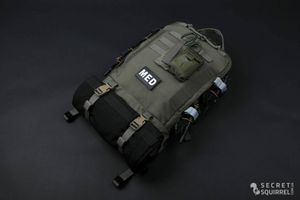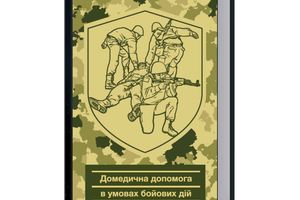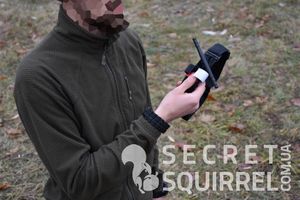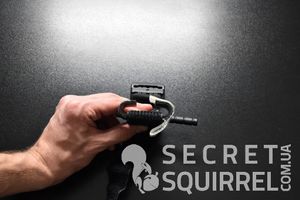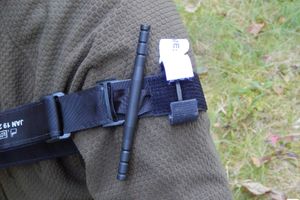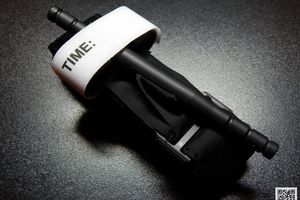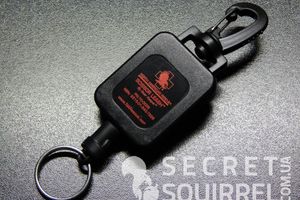Talon II Model 90C - a semi-rigid stretcher from North American Rescue, used by the armed forces of the United States and NATO member countries, military and civilian services across almost the entire globe.
Earlier, we already surveyed soft evacuation stretchers designed to evacuate and move victims over relatively short distances. Soft stretchers are inherently a step towards accelerating and facilitating evacuation, rather than trying to make this process comfortable for the victim, as well as for persons performing evacuation. Carrying the victim over rough terrain and even at impressive distances with their use is another test that I, for example, had a chance to experience on myself during the RC TacMed “TCCC and Rifle Training” course.
Soft evacuation stretchers fully perform their functions and use at the stage of the primary movement of the victim from red (if this is possible at all taking into account the situation) to yellow, and, more often, from yellow to green. Further on the way, the victim still has a long road from the front edge to the local medical care center (sorting center, field hospital, etc.) and further to the nearest medical institution or specialized medical institution. Naturally, on this way he still expects a lot of movements from transport to transport, or from the operating room to the office and vice versa. To carry out all these movements for everyone involved is much faster and more comfortable using semi-rigid stretchers, which are the NAR Talon II Model 90C.
In general, this model can be said to be canonical, because since its inception, only the R-LIFT evacuation system from Matbock can be considered a more or less significant breakthrough. But, since it is extremely rare and costs quite impressive money, the NAR Talon II Model 90C stretcher continues to carry out the tasks assigned to them, and safely do this thanks to the following design features and characteristics:
- Compact dimensions when folded, which facilitates storage and transportation.
- Folding ergonomic handles.
- Non-slip coating that repels body fluids and chemicals.
- Six points for attaching racks for infusion solutions.
- Two ties securely fixing the victim.
- An abundance of additional compatible accessories and devices.
- Dimensions when folded: 52 cm. X 22 cm. X 24 cm. (Height \ width \ depth)
- The sizes in the unfolded state: 229 cm. X 57 cm. X 15 cm. (Length \ width \ depth)
- Weight: 7.4 kg.
- Maximum load: 544.3 kg.

Since in most cases the NAR Talon II Model 90C stretcher is stored and transported in the folded state, before talking about their features in more detail, I will focus on the folding process. To deploy a stretcher with one person, you need to follow these steps:

- Unfasten fasteners that fasten crosswise slings and secure the NAR Talon II Model 90C when folded.

- Grasp the handles located on opposite sides of the stretcher and unfold the structure. Please note that the stretchers are laid out in a shape reminiscent of the Latin letter “W”. If, after unfolding, the Latin letter “M” formed at you, you grabbed the wrong edge, turn the stretcher over and continue, or you still have to turn them over later. It’s better to get better now, while there’s no need to run from one edge to another once again.

- Align the joints of the NAR Talon II Model 90C completely and move to one of the sides where you need to grab the handles (already laid out or not yet).

- Next, you have to perform a simple rotation of each of the poles 90 degrees outward. As a result of the rotation, the joints of the joints that you previously laid out will turn perpendicular to the surface, and the legs of the NAR Talon II Model 90C stretcher will be above the poles, as shown in the photo above. This rotation of the poles gives rigidity to the entire structure and further the joints are no longer bent under weight.

- After this, it is necessary to fix the poles in this position, for which one more action is performed. On each side of the NAR Talon II Model 90C, grabbing the handle of the poles with your hands, you need to squeeze the partitions into the stretcher. Some heroes manage to do this with their hands or with a delivered strike, but for me the easiest way to do this is to rest with the sole on the central part of the partition, and squeeze the partition with your foot, pulling the poles with your hands.

- Squeezing the partitions on both sides, you completed the assembly process of the NAR Talon II Model 90C. All that remains is to turn the stretcher with its legs down, and the surface, respectively, up.

Folding the NAR Talon II Model 90C into its storage / transport position takes place by repeating the steps described in reverse order.
Now in more detail about the stretchers themselves and their features.

The first and quite important, in my opinion, difference from soft evacuation stretchers is the presence of poles and legs that raise the victim above the ground to a distance of about 15 cm. Thanks to him, the victim does not lie directly on the underlying surface, as a result of which there are no problems with heat transfer in the form of convection heat loss (especially when it comes to snow, wet soil, wet vegetation, etc.). If at the front line, where evacuation is carried out mainly on the principle of “Life for Health” on soft stretchers, it is still somehow acceptable to lay the victim directly on the ground, then it is better to avoid this at the next steps. In addition to injuries and injuries, your victim does not need a cold, and victims in shock conditions already have an increased tendency to develop hypothermia.

The next difference is the hard carrying handles. These are not loops, but full-fledged powerful graceful handles with an ergonomic design with which the victim can be transported by means of only two carriers. In this case, the stretcher will not bend in the center under the weight of the victim, as is the case with soft evacuation stretchers. In addition, the NAR Talon II Model 90C handles fold when they are not needed, which saves space when placing unfolded stretchers inside evacuation vehicles and helicopters. The handles also have a locking mechanism that locks them in the unfolded state.
The main area of the NAR Talon II Model 90C, consisting of four sections, is made of durable polymer material with three-dimensional weaving. Due to this structure, the stretcher canvas does not absorb water, body fluids (blood, sweat, saliva, urine, etc.) and other moisture. Thus, the NAR Talon II Model 90C remains clean (as liquids either simply drain through the weave or are quickly washed off with ordinary cleaning products or water under pressure) and do not add weight.

With all this, the NAR Talon II Model 90C is able to withstand almost half a ton of weight, which is more than enough to carry a large size victim with additional equipment.

For added comfort and reliability, the NAR Talon II Model 90C has two adjustable slings with large fastex straps that can fix the victim in the chest area and just above the knee. Slings will also not be superfluous when fixing a hypothermic blanket and other insulating devices.

At the joints of the stretcher also have holes shown in the photo above. In total there are six of them and they are designed to fix the adjustable NAR Adjustable IV Pole racks, on which vessels with solutions for intravenous infusion can be fixed. If necessary, they, of course, can be replaced with something at hand up to the branch with a branch cut to the desired diameter.
In addition to the infusion solution racks mentioned, North American Rescue also has a wide range of NAR Talon II Model 90C compatible accessories, such as the NAR Talon Backrest attachable backrest, the NAR Gryphon Litter Carrying Harness, NAR Litter Stands and the backpack for Transportation NAR Talon II Assault Litter Carrier.

As you can see in the photo above, the size of the NAR Talon II Model 90C is quite enough to accommodate a person of average build. With my height a little more than 180 cm, my feet hang slightly, but nothing critically affects comfort or the ability to carry it. Pulling out the handles of the place to hold the carrier is more than enough. Unlike soft stretchers, the width of this model is enough even for a comfortable placement of the victim's hands. If necessary, they can also be fixed with slings or skipped under the trouser belt, which we have already demonstrated.
The combination of these features with relative compactness and lightness makes the NAR Talon II Model 90C stretcher quite functional and versatile. The weight of 7.4 kg., However, is more inclined to their use in operations using equipment (inside ambulances, evacuation vehicles or helicopters, armored vehicles, etc.), but also on foot transportation during patrol raids or search- rescue operations are also not excluded (although it significantly reduces the number of jointly carried equipment). For those who find this weight excessive, I advise you to go to the nearest ambulance station and compare them with “folding” stretchers with clumsy Soviet-style wooden poles. The difference will be quite obvious.
A source: secretsquirrel.com.ua
Author: secretsquirrel.com.ua











































































































































